Platform Selling Mode Selection Considering Consumer Reference Effect in Carbon Emission Reduction
Abstract
1. Introduction
- What is the impact of reference effect on optimal operational decisions and performance of firms, using no reference effect in CER as a benchmark mode?
- What impact does the reference effect in CER have on the selling mode selection for the platform?
- Considering the impact of the consumer reference effect in CER, how should platforms optimize the choice of selling mode to enhance the triple economic, environmental, and social performance of low-carbon supply chains while promoting cooperation with upstream manufacturers?
2. Literature Review
2.1. Low-Carbon Supply Chain
2.2. Consumer Reference Effect
2.3. Selling Mode Selection
3. Mode Description
4. Model Analysis
4.1. Scenario 1: Reselling Mode ()
4.2. Scenario 1: Agency Selling Mode ()
4.3. Scenario 2: Reselling Mode ()
4.4. Scenario 2: Agency Selling Mode ()
5. Comparative Analysis
6. Numerical Examples
6.1. Time Trajectories of Environmental Goodwill under Different Initial Goodwill
6.2. Analysis of the Impact of Reference Effect on Corporate Decision Making and Performance
6.3. Influence of Reference Effect in CER on the Choice of Platform Selling Mode
6.4. Selling Mode Selection Considering Consumer Reference Effect in CER
7. Conclusions
Author Contributions
Funding
Institutional Review Board Statement
Informed Consent Statement
Data Availability Statement
Acknowledgments
Conflicts of Interest
Appendix A
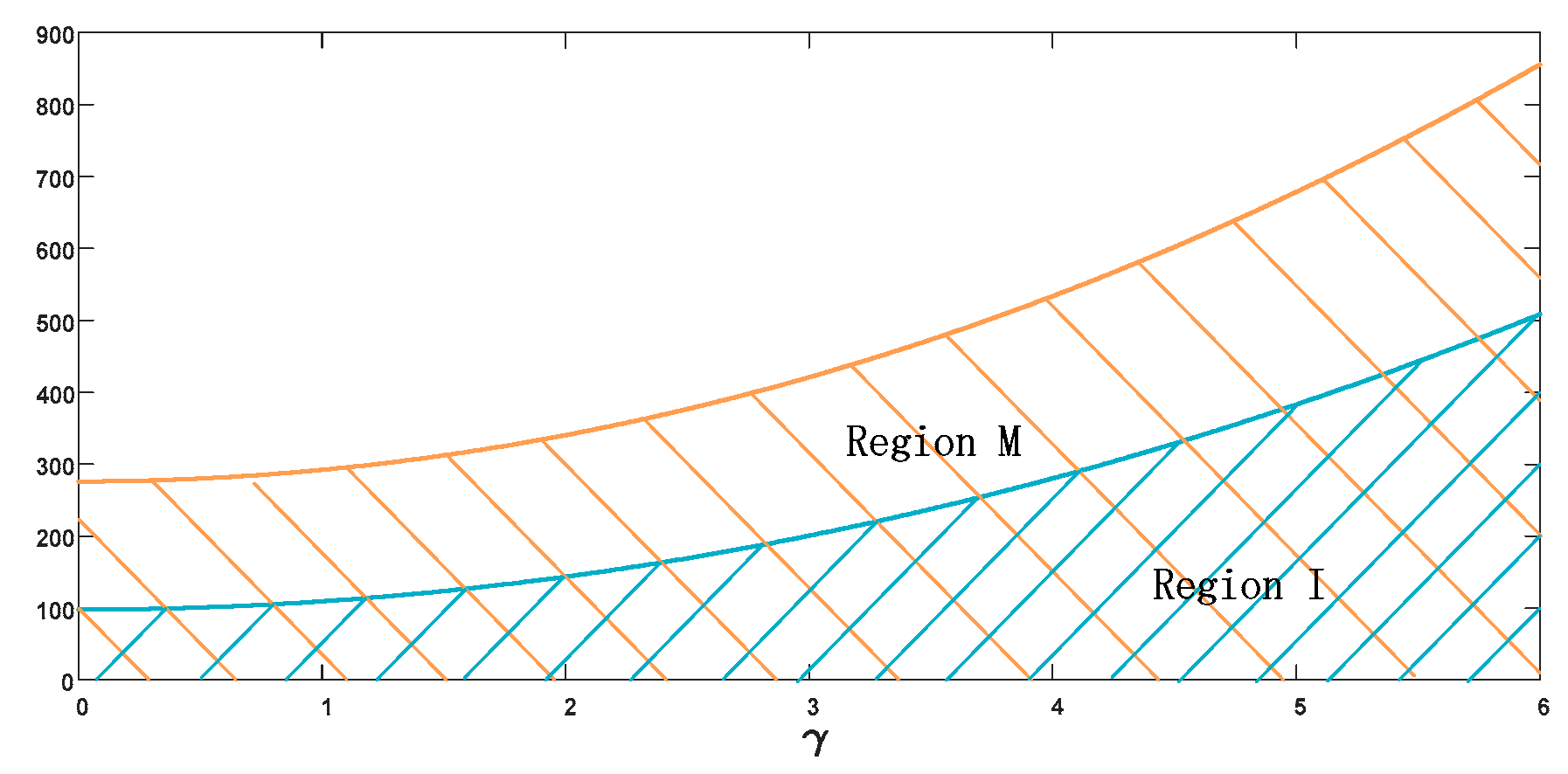
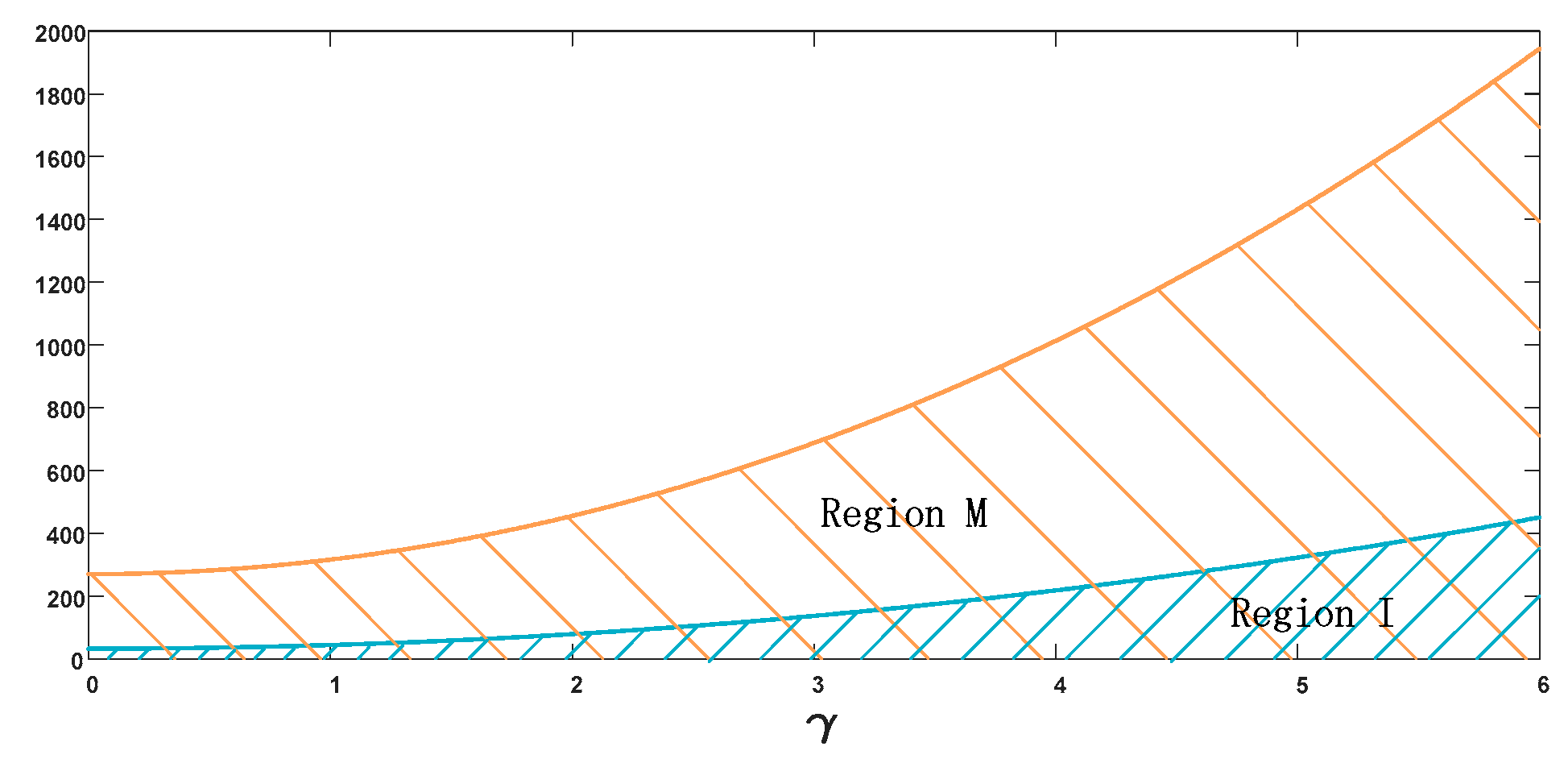
References
- Mehra, A.; Sajeesh, S.; Voleti, S. Impact of reference prices on product positioning and profits. Prod. Oper. Manag. 2020, 29, 882–892. [Google Scholar] [CrossRef]
- Popescu, I.; Wu, Y. Dynamic pricing strategies with reference effect. Oper. Res. 2007, 55, 413–429. [Google Scholar] [CrossRef]
- Broder, J.; Rusmevichientong, P. Dynamic pricing under a general parametric choice model. Oper. Res. 2012, 60, 965–980. [Google Scholar] [CrossRef]
- Chen, X.; Hu, P.; Hu, Z. Efficient algorithms for the dynamic pricing problem with reference price effect. Manag. Sci. 2017, 63, 4389–4408. [Google Scholar] [CrossRef]
- Dye, C.; Yang, C.; Wu, C. Joint dynamic pricing and preservation technology investment for an integrated supply chain with reference price effects. J. Oper. Res. Soc. 2017, 69, 811–824. [Google Scholar] [CrossRef]
- MartíN-HerráN, G.; Taboubi, S.; Zaccour, G. Dual role of price and myopia in a marketing channel. Eur. J. Oper. Res. 2012, 219, 284–295. [Google Scholar] [CrossRef]
- He, Y.; Xu, Q.; Xu, B.; Wu, P. Supply chain coordination in quality improvement with reference effect. J. Oper. Res. Soc. 2016, 67, 1158–1168. [Google Scholar] [CrossRef]
- Liu, G.; Sethi, S.P.; Zhang, J. Myopic vs.far-sighted behaviours in a revenue-sharing supply chain with reference quality effects. Int. J. Prod. Res. 2016, 54, 1334–1357. [Google Scholar] [CrossRef]
- Geng, J.; Ji, M.; Yang, L. Role of Enterprise Alliance in Carbon Emission Reduction Mechanism: An Evolutionary Game Analysis. Int. J. Environ. Res. Public Health 2022, 19, 11368. [Google Scholar] [CrossRef] [PubMed]
- Liu, L.; Li, F. Differential game modelling of joint carbon emission reduction strategy and contract coordination based on carbon emission reduction reference of consumers. J. Clean. Prod. 2020, 277, 123798. [Google Scholar]
- Zhang, S.; Zhang, J. agency selling or reselling: E-tailer information sharing with supplier offline entry. Eur. J. Oper. Res. 2020, 280, 134–151. [Google Scholar] [CrossRef]
- Xu, X.; Choi, T.M. Supply chain operations with online platforms under the cap-and-trade regulation: Impacts of using blockchain technology. Transport. Res. E-Log. 2021, 155, 102491. [Google Scholar] [CrossRef]
- Wang, X.; Ma, D.; Hu, J. Recycling Model Selection for Electronic Products Considering Platform Power and Blockchain Empowerment. Sustainability 2022, 14, 6136. [Google Scholar] [CrossRef]
- Chen, L.; Nan, G.; Li, M. Wholesale pricing or Agent pricing on online retail platforms: The effects of customer loyalty. Int. J. Electron. Commer. 2018, 22, 576–608. [Google Scholar] [CrossRef]
- Alaei, A.M.; Taleizadeh, A.A.; Rabbani, M. Marketplace, reseller, or web-store channel: The impact of return policy and cross-channel spillover from marketplace to web-store. J. Retail. Consum. Serv. 2020, 65, 102271. [Google Scholar] [CrossRef]
- Tian, L.; Vakharia, A.J.; Tan, Y.; Xu, Y. Marketplace, reseller, or hybrid: Strategic analysis of an emerging e-commerce model. Prod. Oper. Manag. 2018, 27, 1595–1610. [Google Scholar] [CrossRef]
- Ha, A.Y.; Tong, S.; Wang, Y. Channel structures of online retail platforms. M&SOM-Manuf. Serv. Oper. 2022, 24, 1547–1561. [Google Scholar]
- Ji, J.; Zhang, Z.; Yang, L. Carbon emission reduction decisions in the retail-dual-channel supply chain with consumers’ preference. J. Clean. Prod. 2017, 141, 852–867. [Google Scholar] [CrossRef]
- Yang, L.; Ji, J.; Wang, M.; Wang, Z. The manufacturer’s joint decisions of channel selections and carbon emission reductions under the cap-and-trade regulation. J. Clean. Prod. 2018, 193, 506–523. [Google Scholar] [CrossRef]
- Xia, Q.; Jin, M.; Wu, H.; Yang, C. A DEA-based decision framework to determine the subsidy rate of emission reduction for local government. J. Clean. Prod. 2018, 202, 846–852. [Google Scholar] [CrossRef]
- Luo, Z.; Chen, X.; Wang, X. The role of co-opetition in low-carbon manufacturing. Eur. J. Oper. Res. 2016, 253, 392–403. [Google Scholar] [CrossRef]
- Pei, Y.; Zhu, Y.; Liu, S.; Wang, X.; Cao, J. Environmental regulation and carbon emission: The mediation effect of technical efficiency. J. Clean. Prod. 2019, 236, 117599. [Google Scholar] [CrossRef]
- Zhang, W.; Li, G.; Uddin, M.K.; Guo, S. Environmental regulation, foreign investment behavior, and carbon emissions for 30 provinces in China. J. Clean. Prod. 2020, 248, 119208. [Google Scholar] [CrossRef]
- Cao, E.; Yu, M. Trade credit financing and coordination for an emission-dependent supply chain. Comput. Ind. Eng. 2018, 119, 50–62. [Google Scholar] [CrossRef]
- Xu, X.; Chen, Y.; He, P.; Yu, Y.; Bi, G. The Selection of Marketplace Mode and Reselling Mode with Demand Disruptions under Cap-and-Trade Regulation. Int. J. Prod. Res. 2021, 1–20. [Google Scholar] [CrossRef]
- Chen, X.; Hao, G. Sustainable pricing and production policies for two competing firms with carbon emissions tax. Int. J. Prod. Res. 2015, 53, 6408–6420. [Google Scholar] [CrossRef]
- Martí, J.M.C.; Tancrez, J.S.; Seifert, R.W. Carbon footprint and responsiveness trade-offs in supply chain network design. Int. J. Prod. Econ. 2015, 166, 129–142. [Google Scholar] [CrossRef]
- Yi, Y.; Jin, L. The effect of governmental policies of carbon taxes an energy-saving subsidies on enterprise decisions in a two-echelon supply chain. J. Clean. Prod. 2018, 181, 675–691. [Google Scholar]
- Kahneman, D.; Tversky, A. Prospect Theory: An Analysis of Decision under Risk. Econometrica 1979, 47, 263–291. [Google Scholar] [CrossRef]
- Tversky, A.; Kahneman, D. Loss Aversion in Riskless Choice: A Reference-Dependent Model. Quart. J. Econ. 1991, 106, 1039–1061. [Google Scholar] [CrossRef]
- Hsieh, T.P.; Dye, C.Y. Optimal dynamic pricing for deteriorating items with reference price effects when inventories stimulate demand. Eur. J. Oper. Res. 2017, 262, 136–150. [Google Scholar] [CrossRef]
- Li, R.; Teng, J.T. Pricing and lot-sizing decisions for perishable goods when demand depends on selling price, reference price, product freshness, and displayed stocks. Eur. J. Oper. Res. 2018, 270, 1099–1108. [Google Scholar] [CrossRef]
- Zhang, J.; Gou, Q.; Liang, L.; Huang, Z. Supply chain coordination through cooperative advertising with reference price effect. Omega 2013, 41, 345–353. [Google Scholar] [CrossRef]
- Chenavaz, R. Dynamic quality policies with reference quality effects. Appl. Econ. 2017, 49, 3156–3162. [Google Scholar] [CrossRef]
- Hagiu, A.; Wright, J. Marketplace or Reseller? Manag. Sci. 2016, 61, 184–203. [Google Scholar] [CrossRef]
- Kwark, Y.; Chen, J.; Raghunathan, S. Platform or wholesale? A strategic tool for online retailers to benefit from third-party information. A Strategic Tool for Online Retailers to Benefit from Third-Party Information. Forthcom. MIS Q. 2013, 41, 763–785. [Google Scholar] [CrossRef]
- Abhishek, V.; Jerath, K.; Zhang, Z.J. Agency selling or reselling? Channel structures in electronic retailing. Manag. Sci. 2016, 62, 2259–2280. [Google Scholar] [CrossRef]
- Zhu, C.; Yao, Z. Comparison between the Agent and wholesale model under the e-book duopoly market. Electr. Commer. Res. 2018, 18, 313–337. [Google Scholar] [CrossRef]
- Guo, X.; Zheng, S.; Yu, Y.; Zhang, F. Optimal Bundling Strategy for a Retail Platform Under agency selling. Prod. Oper. Manag. 2021, 30, 2273–2284. [Google Scholar] [CrossRef]
- Xu, X.; Zhang, M.; Dou, G.; Yu, Y. Coordination of a supply chain with an online platform considering green technology in the blockchain era. Int. J. Prod. Res. 2021, 1–18. [Google Scholar] [CrossRef]
- Zhang, L.; Ma, D.; Hu, J. Research on the sustainable operation of low-carbon tourism supply chain under sudden crisis prediction. Sustainability 2021, 13, 8228. [Google Scholar] [CrossRef]
- Nerlove, M.; Arrow, K. Optimal Advertising Policy Under Dynamic Conditions. Economica 1962, 29, 129–142. [Google Scholar] [CrossRef]
- He, Y.; Zhang, J.; Gou, Q.; Bi, G. Supply chain decisions with reference quality effect under the O2O environment. Ann. Oper. Res. 2018, 268, 273–292. [Google Scholar] [CrossRef]
- Ma, D.; Hu, J. Research on collaborative management strategies of closed-loop supply chain under the influence of big-data marketing and reference price effect. Sustainability 2020, 12, 1685. [Google Scholar] [CrossRef]
- Ma, D.; Hu, J.; Yao, F. Big data empowering low-carbon smart tourism study on low-carbon tourism o2o supply chain considering consumer behaviors and corporate altruistic preferences. Comput. Ind. Eng. 2021, 153, 107061. [Google Scholar] [CrossRef]
- Giovanni, D.P. Smart Supply Chains with vendor managed inventory, coordination, and environmental performance. Eur. J. Oper. Res. 2021, 292, 515–531. [Google Scholar] [CrossRef]
- Wang, W.; Hao, S.; He, W.; Mohamed, A.M. Carbon emission reduction decisions in construction supply chain based on differential game with government subsidies. Build. Environ. 2022, 222, 109149. [Google Scholar] [CrossRef]
- Ma, D.; Hu, J. The optimal combination between blockchain and sales format in an internet platform-based closed-loop supply chain. Int. J. Prod. Econ. 2022, 254, 108633. [Google Scholar] [CrossRef]
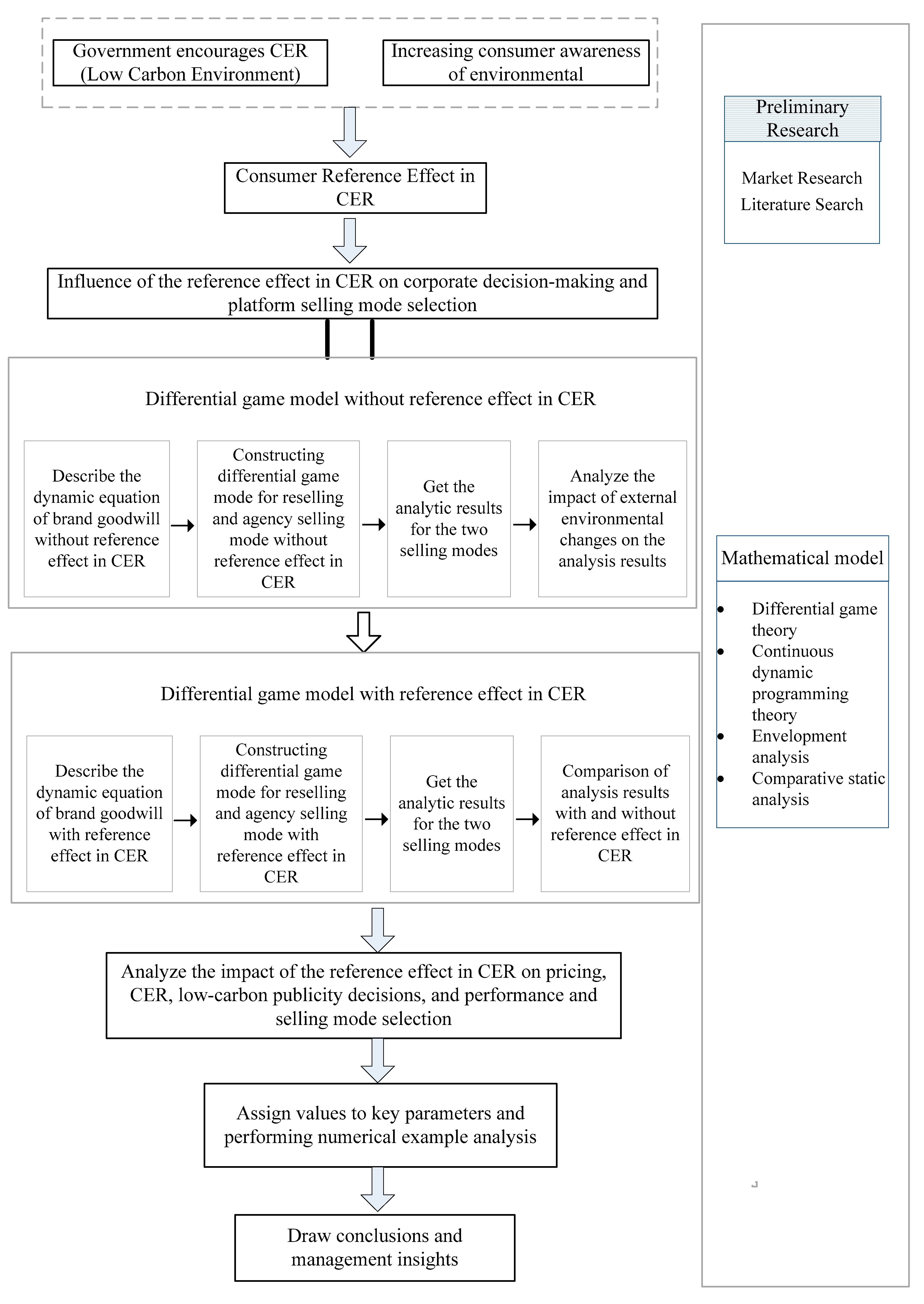



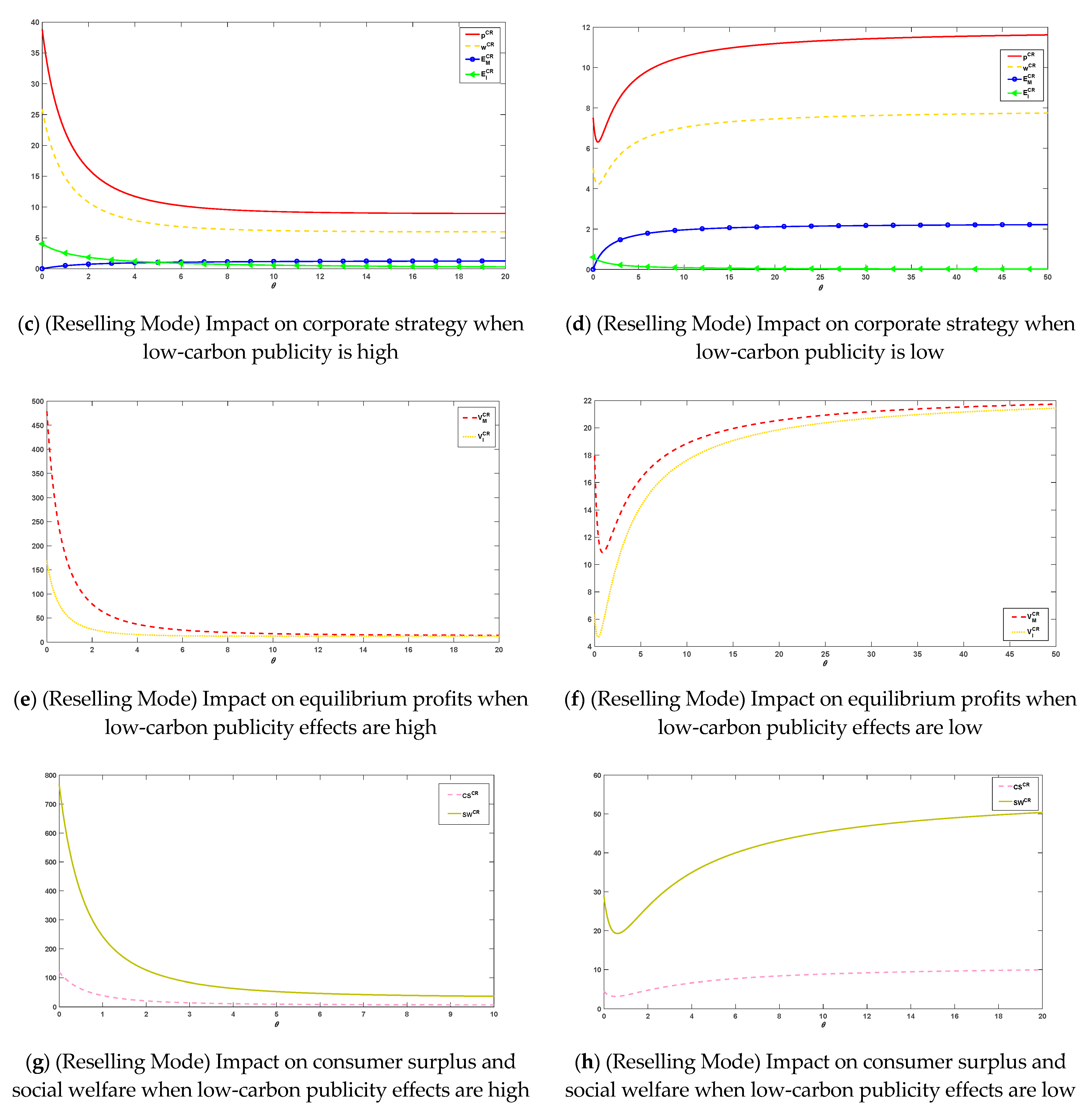
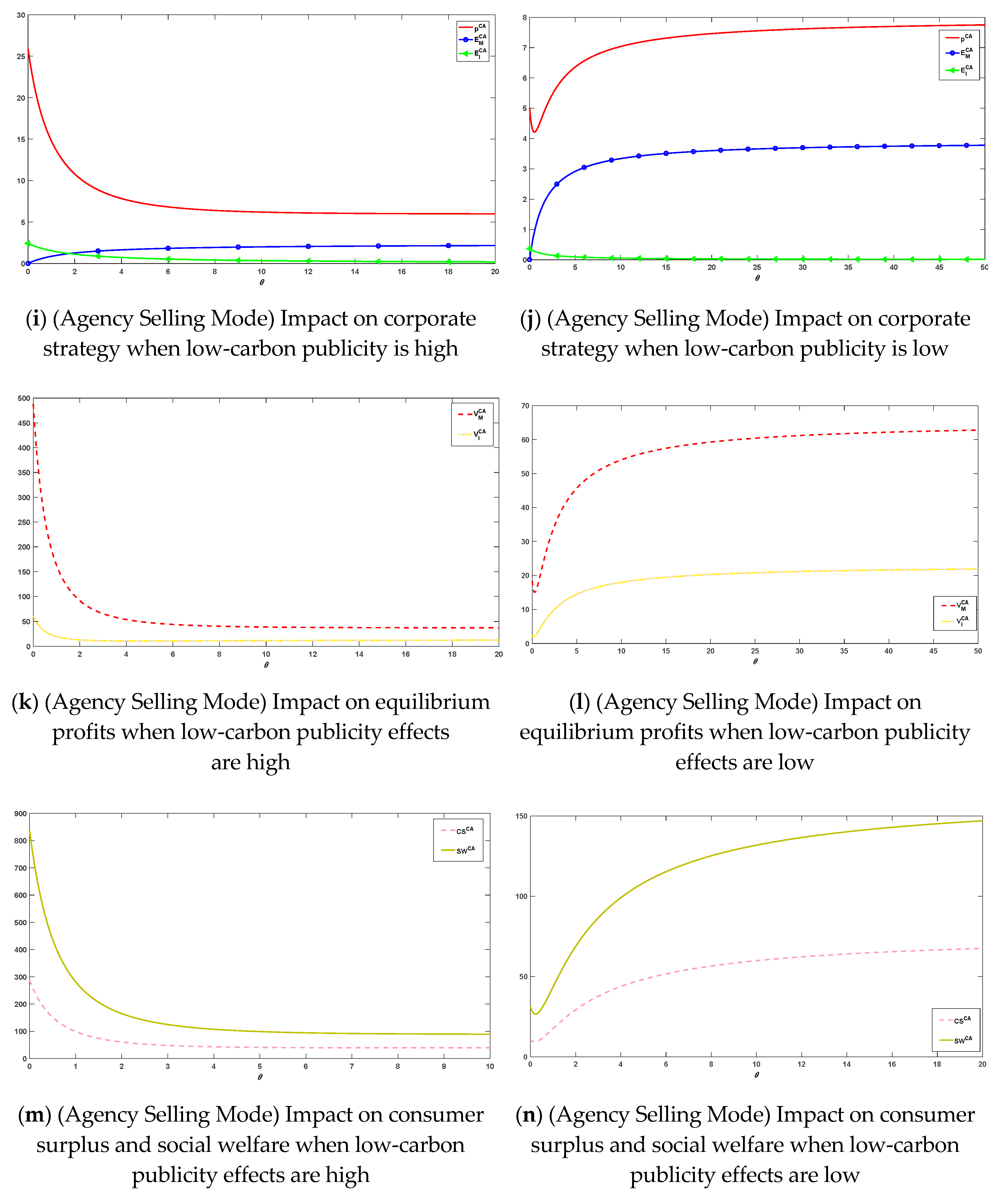
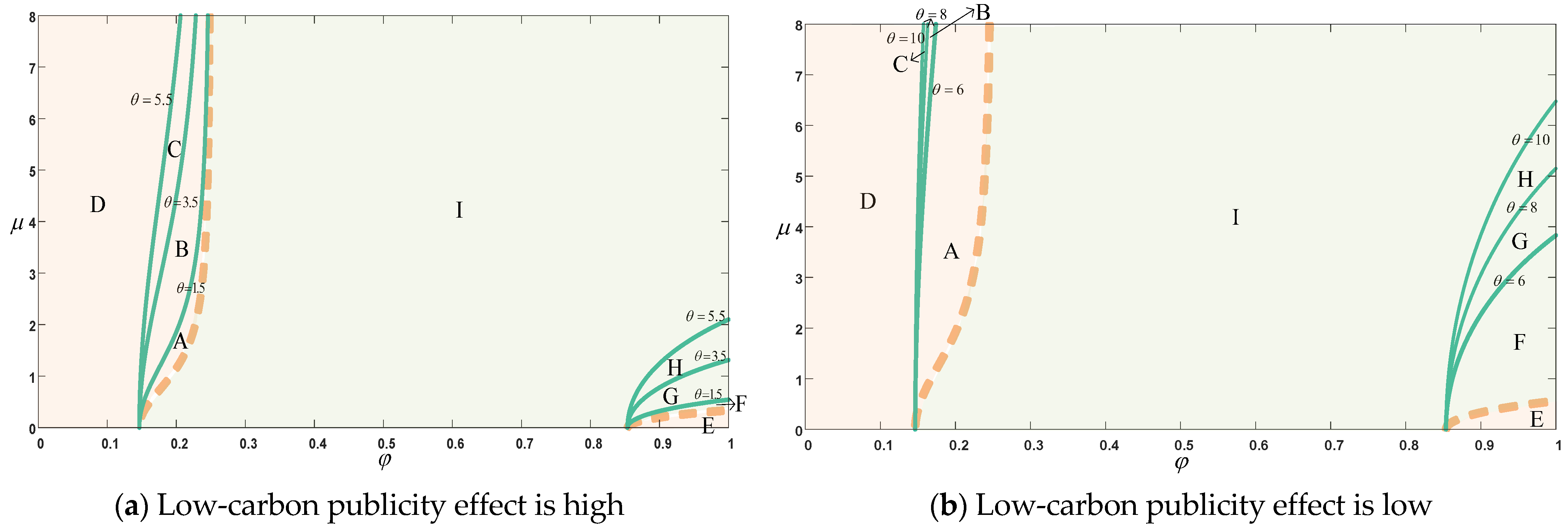


| Literature | Reference Effect in CER | Differential Game | Selling Mode Selection | Triple Benefits |
|---|---|---|---|---|
| Ji et al. (2017) [18] | No | Yes | No | No |
| Xu et al. (2021) [25] | No | Yes | Yes | No |
| Xia et al. (2018) [20] | No | No | No | No |
| Cao and Yu (2018) [24] | No | No | No | No |
| Marti et al. (2015) [27] | No | No | No | No |
| This paper | Yes | Yes | Yes | Yes |
| Symbols | Definitions |
|---|---|
| State Variable | |
| Environmental goodwill | |
| Decision Variable | |
| The wholesale price of the product at time t | |
| The retail price of the product at time t | |
| Carbon emission reduction (CER)of the manufacturer at time t | |
| Low-carbon publicity of the platform at time t | |
| Reference carbon emission reduction at time t | |
| Exogenous parameters | |
| Influence coefficient of CER on environmental goodwill | |
| Influence coefficient of low-carbon publicity on environmental goodwill | |
| Influence coefficient of reference effect in CER on environmental goodwill (sensitivity coefficient of reference effect) | |
| The magnitude of the platform power | |
| The normal decay rate of goodwill caused by consumer forgetting effect | |
| Consumer sensitivity to price | |
| Influence coefficient of environmental goodwill on carbon emission reduction reference | |
| Commission rate | |
| Discount rate | |
| The cost coefficient of the CER for the manufacturer | |
| The cost coefficient of low-carbon publicity for the platform | |
| ─ | |||||
| ─ | |||||
| ─ | |||||
| ─ | |||||
| ─ | ─ | ─ | ─ | ─ |
| ─ | ||||
| ─ | ||||
| ─ | ||||
| ─ | ||||
| ─ | |||||
| ─ | |||||
| ─ | |||||
| ─ | ─ | ─ | ─ | ─ |
| ─ | ||||
| ─ | ||||
| ─ | ||||
Disclaimer/Publisher’s Note: The statements, opinions and data contained in all publications are solely those of the individual author(s) and contributor(s) and not of MDPI and/or the editor(s). MDPI and/or the editor(s) disclaim responsibility for any injury to people or property resulting from any ideas, methods, instructions or products referred to in the content. |
© 2022 by the authors. Licensee MDPI, Basel, Switzerland. This article is an open access article distributed under the terms and conditions of the Creative Commons Attribution (CC BY) license (https://creativecommons.org/licenses/by/4.0/).
Share and Cite
Ma, D.; Wang, X.; Hu, J. Platform Selling Mode Selection Considering Consumer Reference Effect in Carbon Emission Reduction. Int. J. Environ. Res. Public Health 2023, 20, 755. https://doi.org/10.3390/ijerph20010755
Ma D, Wang X, Hu J. Platform Selling Mode Selection Considering Consumer Reference Effect in Carbon Emission Reduction. International Journal of Environmental Research and Public Health. 2023; 20(1):755. https://doi.org/10.3390/ijerph20010755
Chicago/Turabian StyleMa, Deqing, Xue Wang, and Jinsong Hu. 2023. "Platform Selling Mode Selection Considering Consumer Reference Effect in Carbon Emission Reduction" International Journal of Environmental Research and Public Health 20, no. 1: 755. https://doi.org/10.3390/ijerph20010755
APA StyleMa, D., Wang, X., & Hu, J. (2023). Platform Selling Mode Selection Considering Consumer Reference Effect in Carbon Emission Reduction. International Journal of Environmental Research and Public Health, 20(1), 755. https://doi.org/10.3390/ijerph20010755






